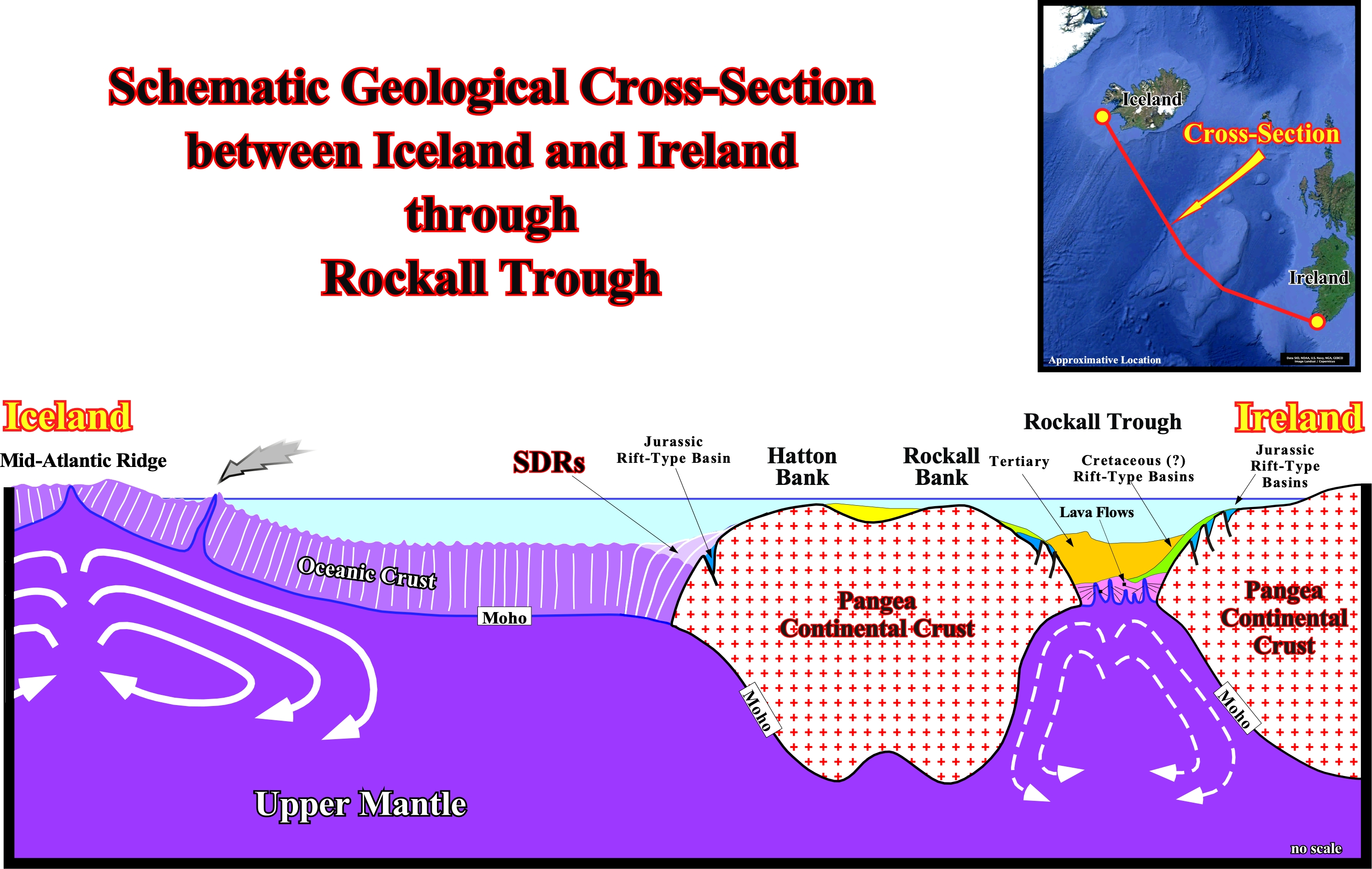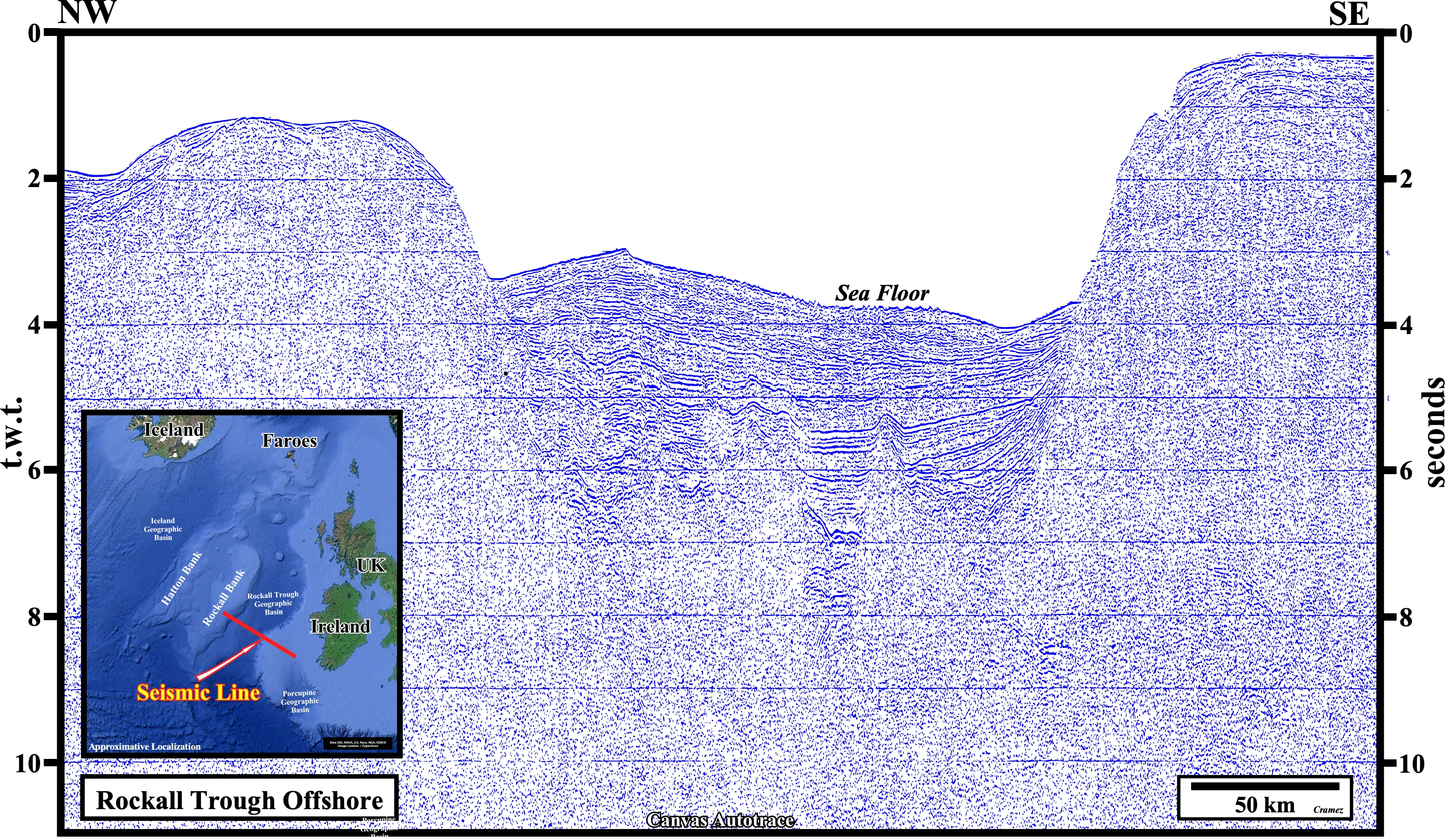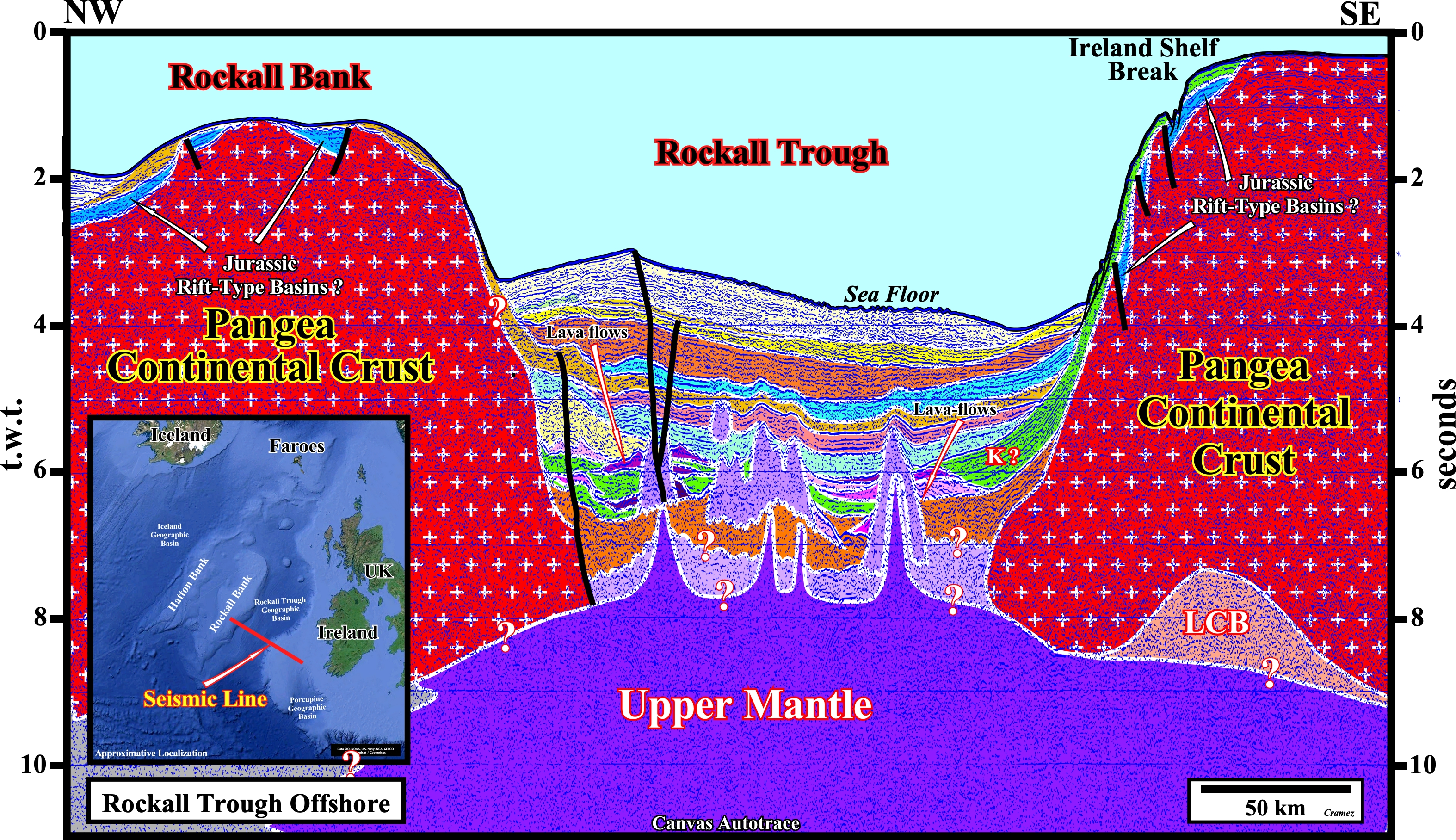

West Ireland Offshore
Rockall Trough
The Rockall Trough area in the North Atlantic is an aborted margin that preserves tectonic evolution stages that we think are similar to those of the breakup of the South Atlantic. Rifting Stage: In the north, where a thinned continental crust is overlain by flood basalts that built lava deltas ; seamounts are common along leaky fault zones ; this region was later elevated by inversion in the Vøring Plateau. Breakup Stage: In the south, where large volcanoes and volcanic flows are flanked locally by SDRs ; underlying thin crust probably represents highly extended continental crust injected by dikes and other intrusions. The Rockall through ceased to widen in the early Tertiary after mantle upwelling ceased or shifted westward. The basin continued to subside faster than onlapping deepwater sediments accumulated, forming the present-day Rockall Trough (see next autotraces)

On this schematic geological cross-section between the South Iceland offshore (Mid-Oceanic ridge and Ireland Offshore), passing trough the Rockall Trough, it is easy to understand that the Rockall trough area is an aborted Atlantic-type divergent margin preserving a tectonic evolution similar to that of the breakup of the South Atlantic. In fact, the Pangea lengthened and thinned continental crust (Rockall Through), Jurassic and Cretaceous rift-type basins developed before the the breakup of the lithosphere, which seems, here, to done, exclusively, by sub-aerial expansion centers from which effused mantle material formed lava flows (SDRs) and built lava deltas with seamounts along leaky fault zones. The breakup zone was, later, fossilized by Tertiary sediments forming an aborted divergent margin, because, in the Early Tertiary, the Rockall geographic basin ceased to widen after the mantle upwelling ceased or shifted westward. Nevertheless the basin continued to subside faster than the onlap infilling of the deepwater sediments accumulated, forming the present-day Rockall Trough as illustrated on the next Canvas autotrace.


On this tentative interpretation of a Canvas autotrace of a regional seismic line crossing the Rockall Trough, it is quite evident the Pangea continental crust was breakdown by injections of upper mantle material reaching the surface in a sub-aerial environment creating lava-flows. The injections of the mantle material ended by individualizing two lithospheric plates represented here, mainly, by the Ireland continental crust, on the right, and the Rockall Bank continental crust, on the left. However, since the mantle upwelling shifted westward (see the above cross-section), the breakup zone collapse with a subsidence much higher than the deposition rate creating an important water depth, which was, partially, filled by deepwater sediments as illustrated on Page 6.
Send E-mails to carlos.cramez@bluewin.ch with comments and suggestions to improve this atlas.
Copyright © 2001 CCramez
Last update:
2022